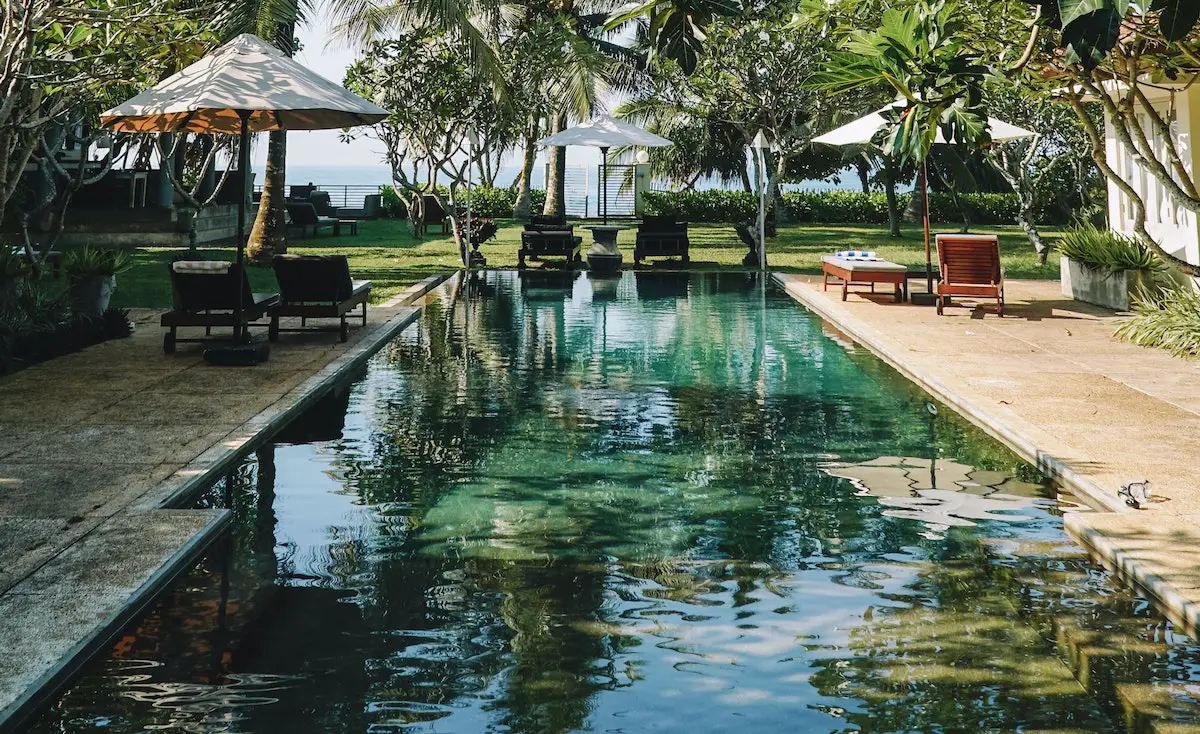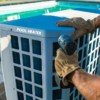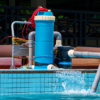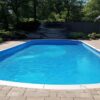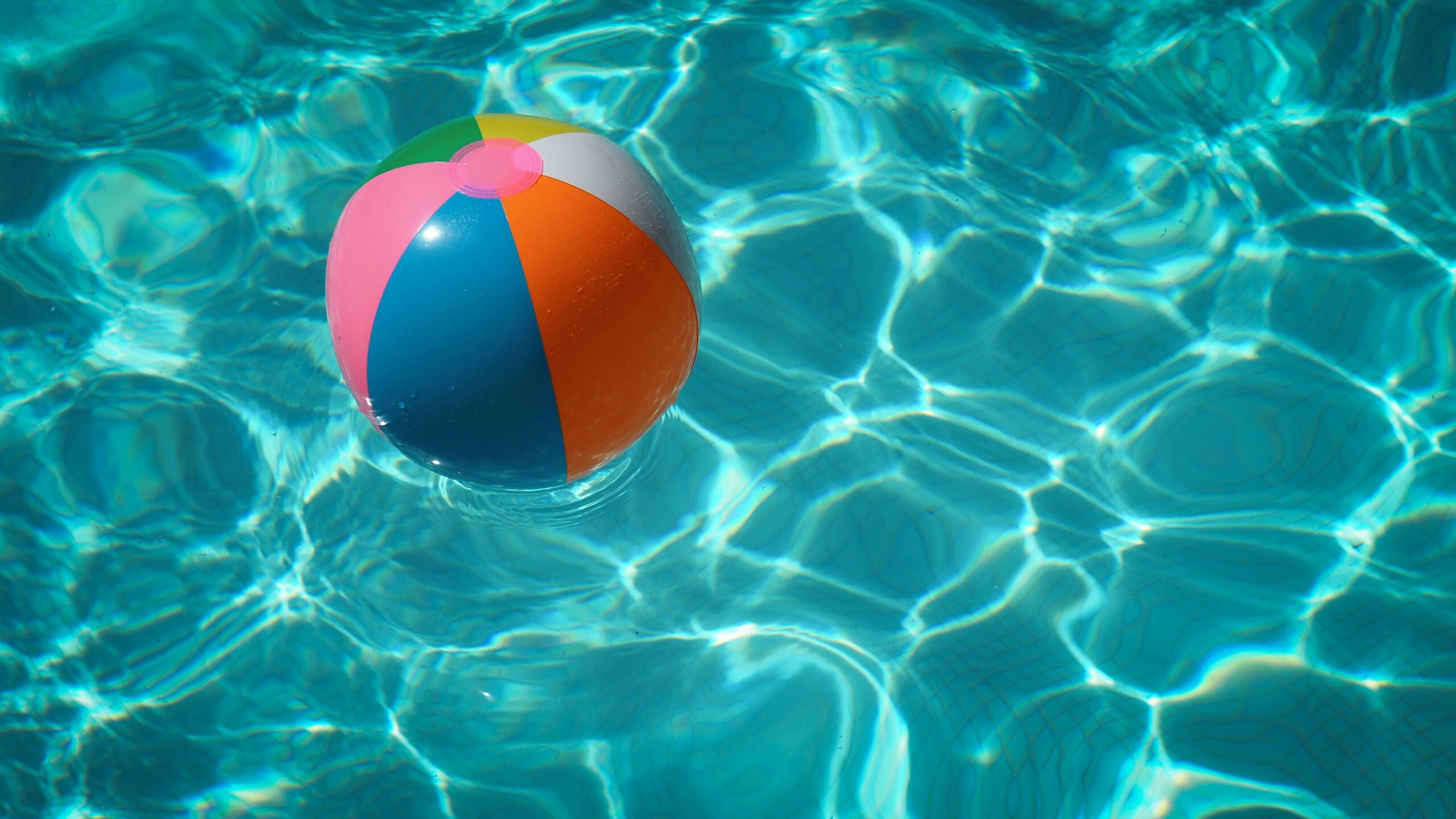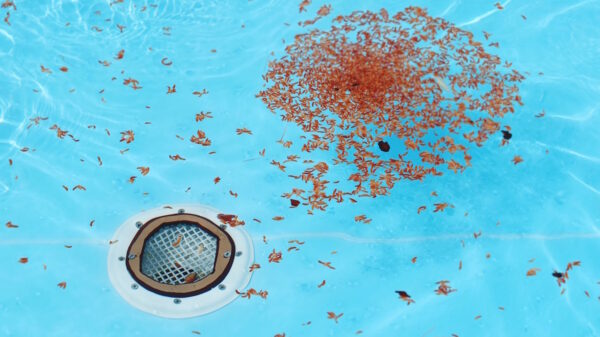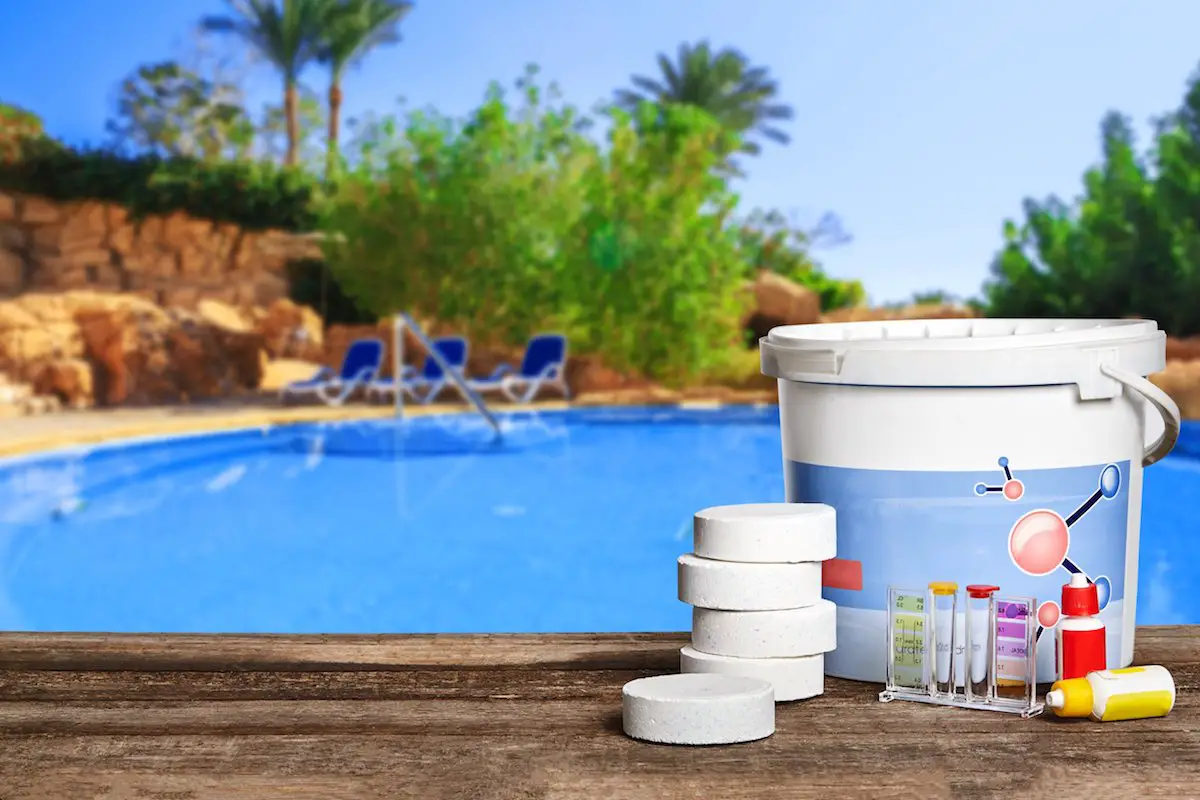Natural Swimming Pools vs. Regular Pools
When it comes to swimming pools, there are two main types: natural swimming pools and traditional chlorine pools.
So, what’s the difference between the two? Natural swimming pools are, as the name suggests, more natural in both their appearance and their filtration system. They typically have a stone or gravel bottom, and use plants to filter the water.
This means that they don’t require harsh chemicals like chlorine, making them much better for both your skin and the environment. However, natural swimming pools can be more difficult to maintain than traditional chlorine pools.
Traditional chlorine pools, on the other hand, use a chemical filtration system to keep the water clean. While this is effective at killing bacteria and keeping the water clean, it can be harsh on your skin and eyes. Chlorine pools also require more maintenance than natural swimming pools, as you have to constantly add chlorine to the water to keep it at the correct level.
So, which type of pool is right for you? It really depends on your personal preferences. If you’re looking for a more natural option that is better for the environment, then a natural swimming pool is the way to go. However, if you’re looking for a pool that is easier to maintain and doesn’t require as many chemicals, then a traditional chlorine pool may be a better choice.
What Are Natural Swimming Pools?
A natural swimming pool is a pool that uses only natural materials and processes to filtrate and cleanse the water. This means that there are no chemicals or mechanical filtration systems used whatsoever. The result is a pool that is not only safer and healthier for swimmers, but also much more eco-friendly.
Building a Natural Swimming Pool
In fact, it can actually be quite easy – especially if you have some basic DIY skills. Here are the basics of how to build a natural swimming pool:
Choose the Right Location
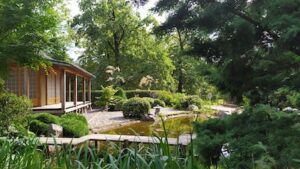 There are many reasons why location is important for a natural swimming pool. Perhaps the most important reason is that an NSP needs to be located near a source of fresh water.
There are many reasons why location is important for a natural swimming pool. Perhaps the most important reason is that an NSP needs to be located near a source of fresh water.
This could be a river, stream, lake, or even a well. The water must be fresh in order for the plants to properly filter it. Otherwise, the plants will quickly become overwhelmed and the pool will become dirty.
Another important reason for a good location is sunlight. The plants in an NSP need sunlight to photosynthesize and produce the oxygen that keeps the water clean. If the pool is located in a shady spot, it will be more difficult to keep the water clean.
Finally, it’s important to consider the climate when choosing a location for an NSP. In cold climates, the pool will need to be located in a spot that receives plenty of sun so that it doesn’t freeze over. In hot climates, the pool will need to be located in a shaded spot to keep the water from becoming too warm.
Excavate the Desired Shape and Size
There are many reasons why size and shape are important for a natural swimming pool. First, the right size and shape will ensure that the pool has enough water to properly circulate and filter.
Second, the right size and shape will help to maximize the pool’s solar exposure, which is important for heating the water and keeping it clean. Finally, the right size and shape will create a more aesthetically pleasing pool that is inviting and enjoyable to swim in.
Line the Excavation With Heavy-Duty Liner
 If you’re the one planning on installing a natural swimming pool, lining the area is a critical step.
If you’re the one planning on installing a natural swimming pool, lining the area is a critical step.
- Choose the right liner material. There are several options available, but PVC is the most popular choice for natural swimming pools. It’s durable and easy to work with, and it won’t interact with pool chemicals.
- Measure the area carefully. You’ll need to know the dimensions of the pool so you can cut the liner to size.
- Install a sub liner. This is an important step if you’re using PVC, as it will help protect the liner from UV damage. Start at one end and work your way around, making sure to smooth out any wrinkles as you go.
- Fill the pool with water. Once the liner is in place, you can start filling the pool with water. This may take some time, so be patient!
Allow It to Settle
This allows the pool to filter out impurities and debris that may have been brought in by swimmers. Second, it helps to maintain the pool’s pH balance and keep the water clean and clear.
Third, it prevents the growth of algae and other aquatic plants that can make the pool look unsightly. Finally, letting the water settle also allows any chemicals that were added to the pool to dissipate, making the pool safer and more comfortable to swim in.
Add Plants to The Pool
If you’re planning on adding plants to a natural swimming pool, there are a few things you need to keep in mind. First, you’ll need to make sure the plants are suitable for the climate and conditions in your area. Second, you’ll need to choose plants that will help keep the water clean and free of algae. Here are a few suggested plant species that can work well in natural swimming pools:
- Water lilies (Nymphaea spp.) are a classic choice for natural pools. They come in a variety of colors and can tolerate a wide range of water conditions. Water lilies help shade the water and their roots help keep the pool clean by absorbing nutrients that would otherwise promote algae growth.
- Floating heart (Nymphoides spp.) is another good option for natural swimming pools. These plants have heart-shaped leaves that float on the water’s surface. They also help keep the water clean and free of algae.
- Water hyacinth (Eichhornia crassipes) is a fast-growing plant that can quickly cover the surface of a natural pool. Water hyacinth helps shade the water and absorb excess nutrients that can promote algae growth.
- Lotus (Nelumbo spp.) is a beautiful option for natural pools. Lotus plants have large, round leaves that float on the water’s surface. Their flowers are also very showy. Like other aquatic plants, lotus help keep the water clean by absorbing nutrients that would otherwise promote algae growth.
- Water canna (Canna spp.) is another good choice for natural pools. Water canna have large, tropical-looking leaves and showy flowers. They help keep the water clean by absorbing nutrients that would otherwise promote algae growth.
- Marginal plants are plants that grow in shallow water or on the banks of a body of water. Marginal plants can help stabilize the banks of a natural pool and their roots help keep the water clean by filtering out excess nutrients. Good choices for marginal plants include cattails (Typha spp.), irises (Iris spp.), and sedges (Carex spp.).
- Submerged plants are plants that grow completely underwater. Submerged plants help keep the water clean by absorbing nutrients that would otherwise promote algae growth. Good choices for submerged plants include watermilfoil (Myriophyllum spp.), hornwort (Ceratophyllum demersum), and anacharis (Egeria densa).
Do Natural Swimming Pools Attract More Mosquitos
There is a common misconception that natural swimming pools attract more mosquitoes than traditionally chlorinated pools. However, this is not the case!
Natural swimming pools actually provide a less hospitable environment for mosquitoes, since they do not contain the high levels of chlorine that can attract these pests. Studies have shown that natural swimming pools can actually reduce the overall mosquito population in an area!
Natural Pool Maintenance
 There are many benefits to having a natural swimming pool. They are not necessarily easier to maintain than traditional pools, but they are also better for the environment.
There are many benefits to having a natural swimming pool. They are not necessarily easier to maintain than traditional pools, but they are also better for the environment.
If you are consistent and careful, maintaining them won’t be a problem at all. Here are some tips on how to keep your natural pool in top condition:
- Use a pool cover. A pool cover will help to keep your pool clean and reduce evaporation.
- Use a skimmer. A skimmer will remove leaves and other debris from the surface of your pool.
- Use a brush. A brush can help you reach areas that are difficult to reach with a skimmer.
- Test the water regularly. You should test the pH level of your pool water at least once a week.
- Shock the pool. Shocking the pool will kill bacteria and other contaminants.
- Clean the filter. Your pool filter should be cleaned on a regular basis.
By following these tips, you can ensure that your natural swimming pool is easy to maintain.
Build Your Own Natural Swimming Pool!
Building a natural swimming pool is a great way to enjoy all the benefits of swimming without having to worry about the harmful effects of chemicals. It is also much more eco-friendly than a traditional pool and can be a great addition to any home landscape.

